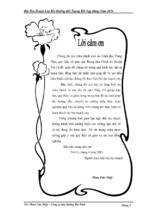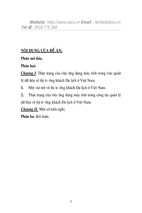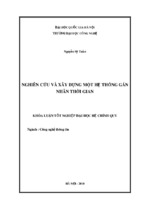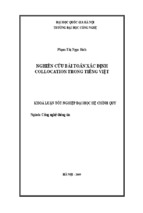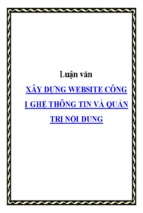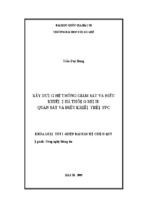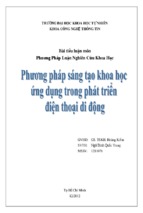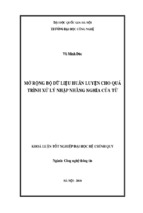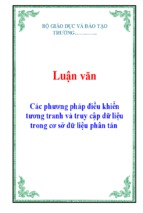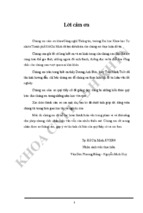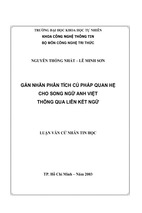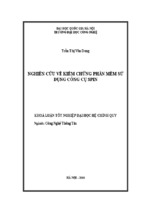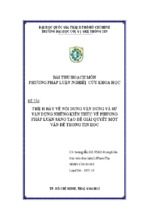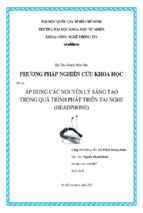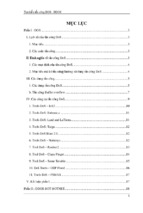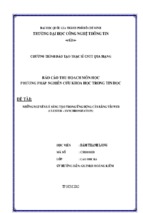Paris Graduate School of Management
Thai Nguyen University
Paris Graduate School of Management
Thai Nguyen University
INTERNATIONAL EXECUTIVE
MASTER OF BUSINESS ADMINISTRATION PROGRAM
THESIS TITLE:
MARKET DEVELOPMENT STRATEGY FOR SUFAT
VIETNAM CORPORATION VISION 2013 - 2018
Student’s name:
PHAM CUONG
Intake I
2012
Pham Cuong
i
CLASS: ieMBA.B01
Paris Graduate School of Management
Thai Nguyen University
ACKNOWLEDGEMENTS
In the thesis process with topic “ Market development strategy for Sufat
Vietnam corporation period year 2013 – 2018 “. Beside the efforts of yourself, I
must say that I am quite happy with his reading and writing after more than 02
months. It is the result of over 02 years of study with 12 subjects of the PGSM
program, with the enthusiastic teaching efforts of professors, PhD, lecturers who
have given very realistic and useful knowledge to the students during their
executive management.
I would like to thank the teachers, especially PGSM board of management in
Vietnam who have made a lot of efforts not only to transfer knowledge to students,
but also have been successful as the organizers of the program.
Yours faithfully,
Pham Cuong
i
CLASS: ieMBA.B01
Paris Graduate School of Management
Thai Nguyen University
TABLE OF CONTENTS
ACKNOWLEDGEMENTS..………………………………………………………i
TABLE OF CONTENTS.........................................................................................ii
LIST OF FIRUGES..............................................................................................vi
LIST OF CHARTS, GRAPHS...........................................................................viii
LIST OF TABLE..................................................................................................ix
INTRODUCTION .................................................................................................1
I.THE NECESSITY OF RESEARCH TOPICS....................................................1
II. RESEARCH METHODS ...............................................................................3
III. Sphere and the researching objects .........................................3
IV. STRUCTURE OF THE THESIS....................................................................3
CHAPTER I: THEORETICAL BASIS OF MARKETING AND MARKET
DEVELOPMENT STRATEGY ...........................................................................4
1.1. BASIC CONCEPTS OF MARKETING........................................................4
1.1.1. Marketing................................................................................................4
1.1.2. Some basics in marketing ........................................................................4
1.2. MARKET ORIENTATION OF A COMPANY ............................................5
1.2.1. Production perspective of view ...............................................................5
1.2.2. Product perspective .................................................................................5
1.2.3. Selling perspective ..................................................................................5
1.2.4. Marketing perspective asserts .................................................................7
1.3. VALUE AND SATISFACTION CUSTOMER IN MARKETING ...............7
1.3.1. The determinants of value for customers .................................................7
1.3.2 Monitoring and quantify methods and customer satisfaction ....................8
1.4. SUPPLY AND SATISFACTION CUSTOMER............................................8
1.4.1. General value chain.................................................................................8
1.4.2. Supplying value system...........................................................................9
1.4.3. The observed results of satisfaction customer ..........................................9
1.4.4. Supplying value system of Levi Strauss ................................................10
1.4.5. Keeping customers. The cost of losing customers..................................10
1.5. THE OVERALL QUALITY OF THE MARKETING (TQM) ....................10
1.5.1. Monitoring the implementation of the overall marketing strategy quality
(synchronous) .................................................................................................10
1.5.2. Win at all costs on the market................................................................ 11
1.6. STRATEGIC PLANNING AND MARKET DEVELOPMENT STRATEGY OF
THE COMPANY................................................................................................ 11
1.6.1. Define the mission and program of the company...................................11
1.6.2. The main types of growth opportunities ................................................12
Pham Cuong
ii
CLASS: ieMBA.B01
Paris Graduate School of Management
Thai Nguyen University
1.7. ANALYSING EXTERIOR ENVIRONMENT (ONLY THE
PPORTUNITIES AND CHALLENGES ............................................................ 13
1.7.1. Opportunities ........................................................................................ 13
1.7.2. Threats .................................................................................................14
1.7.3. Build target .......................................................................................... 15
1.7.4. Construction of strategy ......................................................................15
1.7.5. Construction of programs ......................................................................15
1.7.6. Organizations perform...........................................................................16
1.7.7. Feedback to check ................................................................................17
1.8. THE MARKET ANALYSIS OF CONSUMER AND BEHAVIOR OF
BUYER..............................................................................................................17
1.8.1. Models of behavior customer ................................................................ 17
1.8.2. Analyze the determinants of shopping behavior ....................................17
1.9. PROCESS THROUGH THE DECISION TO BUY.....................................19
1.9.1. Role in shopping ...................................................................................20
1.9.2. The type of shopping behavior .............................................................. 20
1.10. The stages of the buying process are through the buying decisions.........20
1.11. MEASUREMENT AND MARKET OF DEMAND FORECAST .............23
1.1.1. The concepts in the measurement market ..............................................23
1.1.2. SEGMENTATION MARKET AND SELECTION OF TARGET
MARKET: ......................................................................................................24
1.1.3. CREATING DISCRIMINATION CHARACTERISTICS AND
OSITIONING FOR PRODUCT MARKETING .............................................28
1.1.4. DEVELOPMENT, TESTING AND LAUNCH OF NEW PRODUCTS
AND SERVICES............................................................................................ 30
1.1.5. THE DESIGNING PRICE STRATEGY ...............................................33
1.1.6. SELECTION AND MANAGEMENT OF MARKETING CHANNELS
....................................................................................................................... 37
CHARTER II: ANALYSIS OF FACTORS AFFECTING THE MARKET
DEVELOPMENT STRATEGY OF SUFAT VIETNAM COMPANY.............39
2.1.OVERVIEW OF Sufat VIETNAM COMPANY ......................................39
2.1.1. The process of formation and development. ..........................................39
2.2. ANALYSIS OF EXTERNAL ENVIRONMENTAL FACTORS
INFLUENCING THE BUSINESS OF THE COMPANY......................................41
2.2.1. General Environment (PEST model) .....................................................41
2.2.2. Environmental analysis of Vietnam's motorcycle industry....................43
2.2.3. General evaluation on the Vietnamese motorcycle market.....................47
2.3. Analysis of generalSufatmarket forces .....................................................47
2.3.1. Potential competitors.............................................................................48
Pham Cuong
iii
CLASS: ieMBA.B01
Paris Graduate School of Management
Thai Nguyen University
2.3.2. Indirect competitors .............................................................................48
2.3.3. Alternative competitors ........................................................................48
2.4. ANALYSIS AND COMPARISON OF COMPETITORS ........................... 49
2.4.1. Appreciating Sufat’s competitors .......................................................... 49
2.4.2. Recognize competitors’s strategies ........................................................ 49
2.4.3. To classify the competitors....................................................................50
2.5. SUFAT DOMESTIC ENTERPRISE ANALYSIS.......................................55
2.5.1. Analysis ofSufatcorporation’s ability and resources .............................. 55
2.5.2. Review ..................................................................................................57
2.6. Organizational and capacity production....................................................60
2.7. Reviewing of research & development R & D (Research & Development) .....60
2.8. The company's market..............................................................................61
2.8.1. Implementing Marketing in general....................................................... 61
2.8.2. Implementation of Marketing synchronization quality (TQM) ..............62
2.8.3. Chain value of the company's activities .................................................62
2.9. Strategic Planning ....................................................................................... 62
2.9.1. Strategy for growth by diversifying products.........................................62
2.9.2. Market segments ...................................................................................62
2.9.3. Business and investors outside of the company ....................................63
2.9.4. The company's distribution system ........................................................ 64
2.9.5. The Reviewing Quality Management TQM...........................................65
2.10. Determining and reviewing of valuable resources and core capabilities.68
2.11. To sum up SWOT analysis.....................................................................70
CHAPTER III: PROPOSED STRATEGY FOR THE ENTERPRISE ...........71
3.1. VISION AND MISSION:............................................................................71
3.1.1. Vision and mission ................................................................................71
3.1.2. Mission .................................................................................................71
3.1.3. Core value............................................................................................. 71
3.1.4. Quality Policy ....................................................................................... 71
3.1.5. The target of quality ..............................................................................71
3.1.6. Business philosophy ..............................................................................72
3.1.7. Business ethics ......................................................................................72
3.2. PROPOSED STRATEGIES FOR SUFAT VIETNAM ............................... 72
3.2.1. The Market Strategy..............................................................................72
3.2.2. Marketing distinguish or not distinguish...............................................76
3.3. Make a distinctive feature and product positioning for marketing ........76
3.3.1. Make a difference for the products ........................................................ 76
3.3.2. Make the differences in services............................................................ 77
3.3.3. Make a difference in personnel.............................................................. 78
Pham Cuong
iv
CLASS: ieMBA.B01
Paris Graduate School of Management
Thai Nguyen University
3.3.4. Difference in figures..............................................................................78
3.3.5. Management the types of labels and packages .......................................78
3.3.6. Must be brought value to satisfy the demands of customers ..................81
3.3.7. Supply and customer satisfaction .......................................................... 83
3.4. Pricing strategy ........................................................................................ 84
3.4.1. To set the price......................................................................................84
3.4.2. Selection of target valuation ..................................................................84
3.4.3. The selection channels for Sufat ............................................................ 86
3.5. The other key activities ...............................................................................87
3.5.1. Development of engineering technology and information technology ...87
3.5.2. Providers chain......................................................................................88
3.6. To perform marketing of quality (TQM) ..................................................90
3.7. Competitive strategy ................................................................................91
3.7.1. Detection strategies of competitors........................................................ 91
3.7.2. Methods to improve competitive results ................................................92
3.7.3. The detection of direct competitors ....................................................... 93
3.7.4. Designing the competitive intelligence information system ...................95
3.7.5. Balance of opinion-oriented based on customers and competitors .........96
3.8. The solution for implementation..................................................................96
3.8.1. Organizational Structure.......................................................................96
3.8.2. Information channels to ensure that marketing is the most integral
department ......................................................................................................97
3.9. Global development strategy .......................................................................98
3.9.1. Strategies for Sufat ................................................................................98
3.9.2. Strategies for Sufat in oversea markets ..................................................99
3.10. The targets for Sufat in the period 2013 – 2018 .......................................99
CONCLUSION..................................................................................................101
REFERENCES
APPENDICES
Pham Cuong
v
CLASS: ieMBA.B01
Paris Graduate School of Management
Thai Nguyen University
LIST OF FIGURES
Figure 1.1 ...............................................................................................................7
Figure 1.2 ...............................................................................................................9
Figure 1.3 .............................................................................................................14
Figure 1.4 .............................................................................................................14
Figure 1.5 .............................................................................................................16
Figure 1.6. ...........................................................................................................17
Figure 1.7 .............................................................................................................18
Figure 1.8 .............................................................................................................20
Figure 1.9. ...........................................................................................................21
Figure1.10 ............................................................................................................22
Figure 1.11 ...........................................................................................................25
Figure 1.13 ...........................................................................................................27
Figure 1.14 ...........................................................................................................28
Figure 1.15 ...........................................................................................................31
Figure 1.16 ...........................................................................................................32
Figure 1.17 ...........................................................................................................32
Figure 1.18 ...........................................................................................................33
Figure 1.18 ...........................................................................................................36
Figure 1.19 ...........................................................................................................37
Figure 2.1 .............................................................................................................63
Figure 2.2 .............................................................................................................64
Figure 2.3 .............................................................................................................70
Figure 3.1 .............................................................................................................73
Figure 3.2 .............................................................................................................76
Figure 3.3 .............................................................................................................79
Figure 3.4 .............................................................................................................82
Figure 3.5 .............................................................................................................83
Pham Cuong
vi
CLASS: ieMBA.B01
Paris Graduate School of Management
Thai Nguyen University
Figure 3.6 .............................................................................................................84
Figure 3.7 .............................................................................................................85
Figure 3.8 .............................................................................................................86
Figure 3.9 .............................................................................................................87
Figure 3.10 ...........................................................................................................89
Figure 3.11 ...........................................................................................................89
Figure 3.12 ...........................................................................................................90
Figure 3.13 ...........................................................................................................94
Figure 3.14 ...........................................................................................................95
Figure 3.15 ...........................................................................................................97
Pham Cuong
vii
CLASS: ieMBA.B01
Paris Graduate School of Management
Thai Nguyen University
LIST OF CHARTS, GRAPHS
Graph 1.1 .............................................................................................................24
Graph 1.2 .............................................................................................................35
Chart 2.1 ..............................................................................................................40
Chart 2.2 ..............................................................................................................44
Chart 2.3 ..............................................................................................................46
Chart 2.4 ..............................................................................................................53
Chart 2.5 ..............................................................................................................53
Chart 2.6 ..............................................................................................................54
Chart 2.7 ..............................................................................................................64
Pham Cuong
viii
CLASS: ieMBA.B01
Paris Graduate School of Management
Thai Nguyen University
LIST OF TABLES
The table 2.1.........................................................................................................39
The table 2.2.........................................................................................................42
The table 2.3.........................................................................................................44
The table 2.4.........................................................................................................45
The table 2.5.........................................................................................................39
The table 2.6.........................................................................................................52
The table 2.7.........................................................................................................54
The table 2.8.........................................................................................................58
The table 2.9.........................................................................................................63
The table 2.9.........................................................................................................65
The table 2.10.......................................................................................................67
The table 2.11.......................................................................................................68
The table 3.1.........................................................................................................73
The table 3.2.........................................................................................................75
The table 3.3 ........................................................................................................80
The table 3.4.........................................................................................................92
The table 3.5.........................................................................................................93
Pham Cuong
ix
CLASS: ieMBA.B01
Paris Graduate School of Management
Thai Nguyen University
INTRODUCTION
I.THE NECESSITY OF RESEARCH TOPICS
In the eyes of foreign tourists, Vietnam as a young country is changing day
by day, many new things to be discovered including a habit of driving motorcycles.
Do not know ever since the motorcycles have become an indispensable traffic
vehicles of every citizen. Motorcycles take them to work, go to shopping with their
wife, at weekend the whole family on a motorcycle to visit their grandparents and
parents. Looking at the young couple in love with each other on the motorcycle,
looks nice and romantic but few people know, to make motorcycles, especially
Vietnamese brand - Sufat brand to win the trust of customer, is both a creative
working process and large investment on engineering technology, infrastructure.
That it is the employees’ relentless marketing team to find the desired needs of the
consumers and then it is the process of linking divisions to make motorcycles and
popular products and services in domestic and oversea markets.
Motorcycles have emerged since the 1930s of the last century, especially in Asia.
After World War II, motorcycle competition held tough on the 40 companies in
Japan, but so far only 04 major companies (Honda, Yamaha, Suzuki, etc.).in the
1980s, China opened the Chinese motorcycle industry to provide rapid
development. At present strongly growing Chinese motorcycles, cheap gas. At
present account for 50% of the world's motorcycles production mainly for export in
Southeast Asia, the dominance of the Japanese motorcycle company, China's low class motorcycles.
In Vietnam, the motorcycles was introduced in early, since the 60's: The
motorcycles for the North: Mink (USSR) Babeta (Czechoslovakia) Simson
(German Democratic Republic). Pegot (France) Books (Federal Republic of
Germany).Southern: Honda 67. Honda cup, Suzuki, Yamaha, kavasaki (Japan). The
motorcycles on almost all 02, only Cup 67 have moved into the fourth period. Since
the beginning of the reforms (1986) motorcycle marke & stain very developed, the
market mainly imported motorcycles or produced by foreign firms, assembled in
Pham Cuong
1
CLASS: ieMBA.B01
Paris Graduate School of Management
Thai Nguyen University
Vietnam, especially in the motorcycles firms from Japan, and the type of
motorcycle cheap low quality from China (in the 1990s).
At present, Vietnam's motorcycle market is managed partly subsidized, and
a market. State the goal of building the local motorcycle industry.With certain
policies with many Vietnamese businesses involved in this sector.In the years from
1997 to 2000 there were 56 enterprises licensed businesses Estate business.
Although much more difficult, only 7 enterprises operating with very low yields.
Meanwhile, demand for motorcycles in Vietnam market has increased about 10
percent a year
For Vietnamese motorcycles enterprises, many challenges are posed. Market
is dominated by foreign firms (Japan, Taiwan, China, etc.). As for domestic
production, the entire system of suppliers in domestic market haven’t developed,
local supporting industries, mechanical engineering industry is very weak.
Therefore, many of the factories, workshops closed, workers leave the domestic
capital enterprises will have to leave the industry, and almost no longer participate
in new business etc...
As a manufacturing and trading enterprise motorcycles, following a process
of development, at present the corporation is facing difficulties as enterprises other
as noted above, the production and the domestic market doesn’t increase, or even
reducing, export market also has many limitations. This is the major influence on
the development of the enterprise. Therefore market research on the subject
“Market development strategy for Sufat Vietnam corporation vision 2013 – 2018” is
necessary.
The Researching objectives of the thesis:
The researching thesis in order to achieve the main objectives as follows:
1. The theory of the market system, to develop a strategic market and enterprise
development of a market.
2. Analysis of the status of the external environmental factors and internal enterprise
to specify opportunities, challenges, strengths and weaknesses of company Sufat.
Pham Cuong
2
CLASS: ieMBA.B01
Paris Graduate School of Management
Thai Nguyen University
3. Propose strategies to develop and implement solutions to market strategy for the
corporation in the period 2013-2018.
II. RESEARCH METHODS
1. Collected information
Information collected to research from the following sources:
- The secondary information
- The primary information
2. Information processing
Information collection complete set of comparison and analysis to obtain the
identification and assessment of the market situation, the situation of the enterprise.
III. SPHERE AND THE RESEARCHING OBJECTS
The researching thesis focusing on the issues of the company's markets, both
domestic and international markets in the past and the present stage. Thereby, the
forecast trend in the future. Data collected mainly in about 5 years (2007-2011).
IV. STRUCTURE OF THE THESIS
In addition to an introduction and conclusion, the thesis is structured into three
chapters as follows:
Chapter 1. Theoretical basis of marketing and market development strategy
Chapter 2. Analysis of the market situation and business
Chapter 3. Proposed strategy and solution development company markets the
period 2013-2018.
Pham Cuong
3
CLASS: ieMBA.B01
Paris Graduate School of Management
Thai Nguyen University
CHAPTER 1
THEORETICAL BASIS OF MARKETING AND MARKET
DEVELOPMENT STRATEGY
1.1. BASIC CONCEPTS OF MARKETING
1.1.1. Marketing
There can be various definitions, in reality business companies to have new
thinking about the objectives, strategies and tactics of its Marketing, not only based
on the success of yesterday but alsoneeded changes quickly to meet the needs of
consumers.For business. Marketing is a social management process, by which
individuals and groups obtain what they need and desire through creating, offering
and exchanging productsvaluable to others.
1.1.2. Some basics in marketing
Desired needs and requirements:
• The needs of human beings is a state of feeling lack of some basic satisfaction
• Desire is the desire to get things specific to satisfy the deeper needs (Americans
need and expect foods hamburger dish).
• Request is desired to obtain the specific product is backed by the ability and
willingness to buy them.
Products:
• Product is anything that can bring offered to satisfy a need or desire
• The importance of starting material products mostly do not own them, which is to
get the services that it provides.
• The manufacturer or mistake is to much emphasis on their physical products rather
than services that these products perform. They only think about selling products
rather than addressing the needs.
Value, cost, and satisfaction:
• Consumers will consider the value and price of the product before choosing. They
will choose the product that produces the largest value of over 01 money.
Exchange, transactions and relationships
Pham Cuong
4
CLASS: ieMBA.B01
Paris Graduate School of Management
Thai Nguyen University
In the marke always trade activities and exchange, it is a transaction between two
or more parties in which each party must have something (product) or money,
valuable to the other party and requires each party has the ability to transfer
transactions & commodities. It is also the process by which each party has the right
to decide freely to accept or reject the goods of the other party.
Market
The market includes all those potential customers with a specific need or desire,
willing and able to participate in the exchange to satisfy the needs or desires.
The end result of relationship marketing is to create a unique property of the
company, known as Network Marketing.
Marketing Management:
Marketing (Marketing Management) is the process of planning, implementation
planning, pricing, promotion and distribution of goods, services and ideas to create
exchanges with target groups, satisfy the client's objectives and organization.
1.2. MARKET ORIENTATION OF A COMPANY
Market orientation is one of the important issues in Marketing. This orientation
depends on the different views.
1.2.1. Production perspective of view
The view manufacturer asserts that consumers will favor products that are widely
available and cheap.The leaders of the organization as a production standpoint to
focus on improving the efficiency of production and expanded distribution.
1.2.2. Product perspective
According to this view, the assertion that consumers will favor the highest quality
products, good value and have the latest features. The leaders of the organization in
view products often focus energy on making superior products and constantly
improving them.
1.2.3. Selling perspective
The perspective of sale that: If we do not anything, consumers generally do not buy
the product and will not buy the company's products in large quantities. Therefore
Pham Cuong
5
CLASS: ieMBA.B01
Paris Graduate School of Management
Thai Nguyen University
organizations need to effort in the promotion and consumption.This is the point
that most companies apply when they excess capacity with the goal of selling what
they do rather than anything that the market wanted.
1.2.4. Marketing perspective asserts that the key to achieving the organization's
goal is to identify the desired needs of the target market and ensure the desired level
of satisfaction with the effective methods andefficiently than competitors.
Marketing point of view is understood in several ways:
• Meet the needs of a beneficial
• Look for the desire and satisfaction
• Ask your customers, not loved products
• Customer is king
• Do all that is in the best we can for each dollar of compensation worthy
customers with value, quality and satisfaction.
Marketing perspective is based on 04 factors:
Target market: No corporation can operate in all markets and satisfy all your
needs. It does not work well even in a large market sphere. And they need to
identify your target market carefully and prepare a suitable marketing program.
The needs of customers: In fact, customers do not know their demand,
classified into 05 types of demand
• Demand is said: (Want to buy an inexpensive motorcycles)
• The need for real (Make sure the operating costs low, not the original
purchase price)
• Need not say (Expectations agents ensure attentive service)
• Demand is interested (Buying a car is give them something)
• Secret demand
Coordinate marketing: Coordinate marketing with 02 content:
• The different marketing functions, sales force, advertising, product
management, The researching marketing must be coordinated with each
Pham Cuong
6
CLASS: ieMBA.B01
Paris Graduate School of Management
Thai Nguyen University
other (Sales usually complain, product price is too high, Target assigned too
large,
• Marketing must work closely with other departments in the company.
Marketing can not develop effective when all officials and employees
understand their impact on customer satisfaction.
Profitability: All final marketing activities, even the short-term or long-term
profitability for shareholders and the corporation.
For a business, the response to satisfy the needs of customers in business that be
described as in the following chart:
Produce
Marketing
Customer
Customers as controlling function.
Marketing as the merging role
Figure 1.1
1.3. VALUE AND SATISFACTION CUSTOMER IN MARKETING
Value for customers is the difference between total customer value and total
customer cost.
1.3.1. The determinants of value for customers
There are 03 levels of customer satisfaction.
(1) Actual results worse than expected customer dissatisfaction
(2) the actual results match than expected customer dissatisfaction
(3) Actual results overlapped with the expectations of customers are very
satisfied & enjoy.
Pham Cuong
7
CLASS: ieMBA.B01
Paris Graduate School of Management
Thai Nguyen University
1.3.2 Monitoring and quantify methods and customer satisfaction
For enterprises, customer satisfaction is very important. To better satisfy customers
need to monitor and quantify the level of customer satisfaction as a basis for
improving customer satisfaction programs are better. Here are some methods:
Complaints system comments:
- Customer-centric organization to make it easy for customer comments and
complaints: Email favorable, the hotline
Satisfaction surveys of customers:
- Measuring satisfaction customer on satisfaction not only complaints and
suggestions system. because 04 times to buy new 01 comments. Because they
do not take the time and left to buy other companies
- Conduct periodic surveys: They sent a questionnaire, or call: Send the
questionnaire: very dissatisfied, dissatisfied, do not care, happy & very
satisfied.
Disguised as shoppers:
- Check the level of satisfaction the company's products & opponents.
- Check the attitude of employees with customers in areas.
Analysing the cause of customer loss:
- Learn the causes: high prices, unreliable, poor service ..... Interview who are
not using the company's products ....
1.4. SUPPLY AND SATISFACTION CUSTOMER
Michael Porter - Harvard University suggest taking the value chain as a tool of a
company to create value for customers. Main activities create value consists of five
key activities & four support activities. The successful operation not only the good
results of the individual parts, depends on the coordinated activities of different
parts.
1.4.1. General value chain
The core business process:
Pham Cuong
8
CLASS: ieMBA.B01
Paris Graduate School of Management
Thai Nguyen University
- The process of implementation of the new products: All activities related to the
identification of research, development and product launch with fast speed, high
quality
- The inventory management process: To meet customer needs quickly
- The process of ordering and payment
- The customer service process.
1.4.2. Supplying value system
Companies looking for competitive advantages beyond its value chain. By
collaborating with other members in order to improve system performance for
providing value to customers.
Infrastructure
Cơ sở hạ tầng
ofcủa
the công
company
ty
supp
orting
activi
ties
Human
Quản
Resource
lý nguồn
nguồnManagement
nhân lực
lực
Quản
lý
nhân
Technological development
Supply
Extern
al
supplie
rs
Service
Produc
e
Internal
marketi
ng
marketi
ng
sales
Key activities
Figure 1.2
1.4.3. The observed results of satisfaction customer
- Satisfaction Customer will be lower than in the homogeneous product supply
industry for a heterogeneous market. The industry provides homogeneous high
quality products for the market will ensure high levels of satisfaction
- Low level of customer satisfaction → buyers see price fluctuations.
- The industry relies on purchased multiple times in general are created at a higher
customer satisfaction.
Pham Cuong
9
CLASS: ieMBA.B01
Paris Graduate School of Management
Thai Nguyen University
- When a company increase market share → The level of satisfaction decreased by
more customers have heterogeneous requirements drawn into buying products
rather homogeneous.
1. 4.4. Supplying value system of Levi Strauss
Marketing concept do not think the job of the sales department. If the concept of
such a view it is responsible for the formulation a Marketing Mix stimulate
consumption. That need the design and supply chain management, product quality,
cost ...
1.4.5. Keeping customers. The cost of losing customers
Keeping customer is one of the central issues of current business. To keep the
customers need to do well but the following:
- To calculate the rate to keep its customers.
- Determine the cause of the loss of customers: they are not in business, transfer
lines, or poor product, poor service, overpriced.
- Calculate approximately how much profit as loss of customers.
- Calculate how much to reduce customer costs removed. If smaller than the loss is
certain to spend.
There are five levels of behavior-related businesses to keep customers as below:
(1) Basic: Sell all products will no contact with customers.
(2) Repeatability: Sales staff sell the product will encourage customers to call back
with any questions and complaints yet.
(3) To be responsible for: active call customer
(4) Repeated many times: some customer call
(5) Collaboration: the company regularly works with customers, trying to save for
our customers. Basic: Sales staff sold out products are not contact to more
customers.
1.5. THE OVERALL QUALITY OF THE MARKETING (TQM)
1.5.1. Monitoring the implementation of the overall marketing strategy quality
(synchronous)
Pham Cuong
10
CLASS: ieMBA.B01
- Xem thêm -


